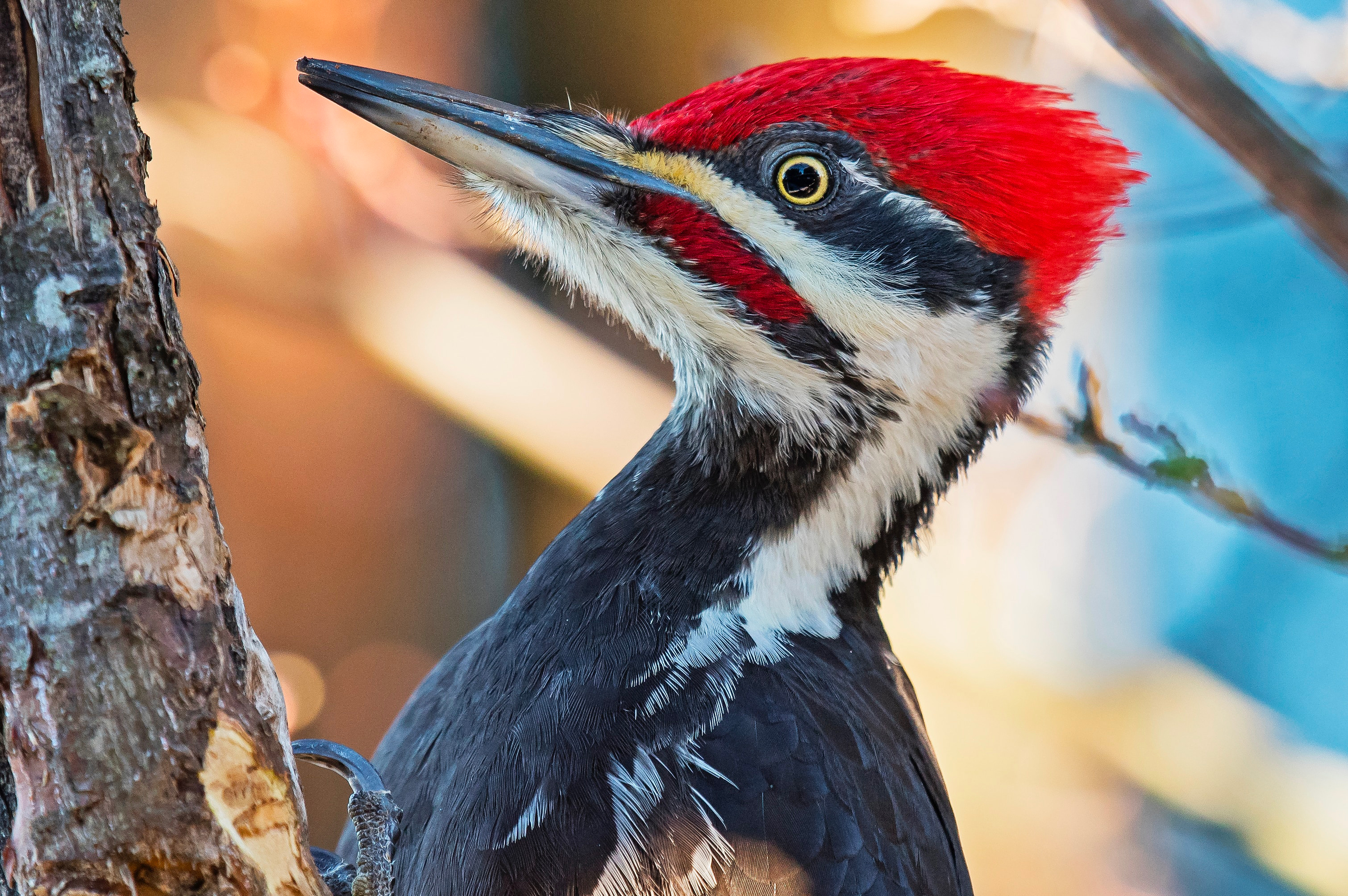bogimac's mascot
The bogimac company mascot is the helmeted woodpecker, being a bird of :
- continuous research
- pecking determination
- shock surviving brains
- tough design
- having a high fire rate
- dynamic actuation
- real-time control
- high speed sensing skills
- compactness & ergonomics

Woodpeckers spend most of their time searching for insects spiraling up tree trunks. When a woodpecker has searched one tree it flies to the base of the next and repeats the operation. Its ability to climb vertical trunks and to maintain its position while pecking the tree is due to its design with two backward-facing toes and an associated arrangement of tendons and leg muscles, sharp claws, and stiff tail feathers tipped with spines which are used as a prop while climbing.
Many of the foraging, breeding and signaling behaviors of woodpeckers involve drumming and hammering using the bill .The woodpecker has a stronger beak than most birds. It must be strong enough to dig into a tree without folding up like an accordion. To find its food, a woodpecker hammers wood at the rate of 15 to 16 times a second—a rate of fire nearly twice as fast as a sub-machine gun.
The woodpecker’s hammering away at trees is involving incredible forces, for the suddenness with which the head is brought to a halt during each peck results in a high stress equivalent to 1,000 times the force of gravity. This is more than 250 times the force to which an astronaut is subjected in a rocket during lift-off !
In order to prevent brain damage from the rapid and repeated decelerations, woodpeckers have evolved a number of adaptations to protect the brain. The woodpecker’s skull is greatly reinforced with bone. This is necessary if the head is not going to break into pieces. Also the orientation of the brain within the skull is important, as it maximizes the area of contact between the brain and the skull.
With it's chisel-tipped bill, the woodpecker is chiseling away a lot of sawdust. Normally the sawdust would enter the nostrils, but the woodpecker has been designed with slit-like nostrils covered by fine wiry feathers to prevent the sawdust from entering. The millisecond before contact with wood a thickened membrane closes, protecting the eye from flying debris.
Also, the beak and brain itself have been cushioned against impact. In most birds, the bones of the beak are joined to the bones of the cranium—the part of the skull that surrounds the brain. But in the woodpecker the cranium and beak are separated by a sponge-like tissue that takes the shock each time the bird strikes its beak against a tree. The woodpecker’s shock-absorber is so good that scientists say it is far better than any that humans have invented.
Added to the uniquely designed neck muscles, shock-absorbers, head, and the other amazing aspects of the woodpecker, there is the unique tongue. The typical woodpecker, after flaking off bark and drilling a hole in wood to expose insect tunnels, uses its long tongue to reach deep into the tree to retrieve insects and larvae. Without the long tongue, there is no way the woodpecker could retrieve the insects. To help capture the insects, the long tongue has glands , specially designed to secrete a sticky substance. The insects and worms stick to it like flies to fly-paper.
How does the woodpecker know it has caught the insects? It has a tongue with a hard spearhead with bristles pointing rearward, which is attached by tiny fibers of the protein collagen. As the tongue probes a tunnel, the impact of the spearhead on any object jams the head back along the shaft. Nerve endings are precisely located in the fluid-filled spaces between the collagen fibers. They provide the brain with feedback information about the type of material contacted; thus, the woodpecker knows whether it has secured an insect or hit the hard wood of a tree. Once the insects stick to its tongue, the woodpecker pulls them from the tree, then pulls in its long tongue and scrapes the insects off into its mouth.
Where does the woodpecker hold such a long tongue when it is not in use? The tongue is stored in a uncommon compact way. For storage, the tongue is curled around the back of the head between the skull and skin. Therefore, the tongue of the woodpecker is anchored in the right nostril. After it emerges from the right nostril, it splits into two halves. Each half passes over one side of the skull underneath the skin, comes around and up underneath the beak, and enters through a hole in the beak. Here the two halves combine. Thus, when the woodpecker is not using his long tongue, he rolls it up and stores it in the right nostril.
Woodpeckers are quite capable of drilling anything from tiny rows of holes to huge yawning craters into the wood of trees, utility poles, and even houses as they search for their meal.